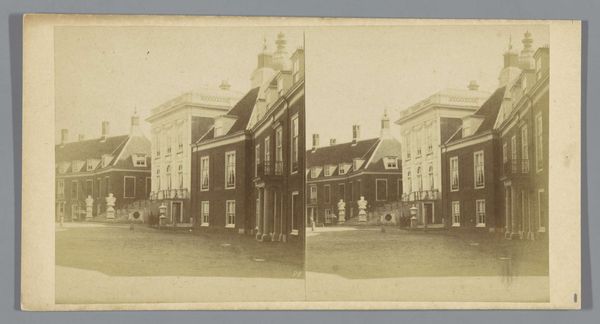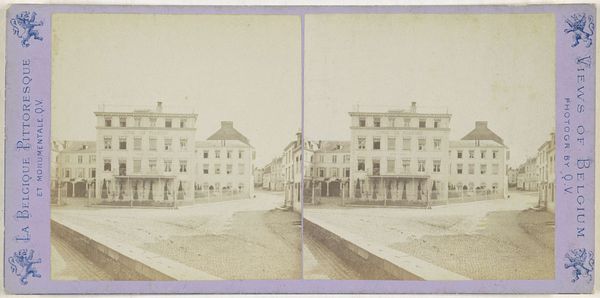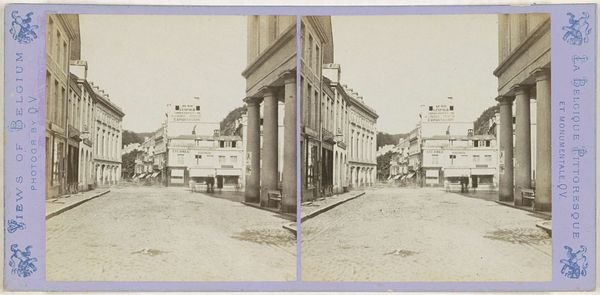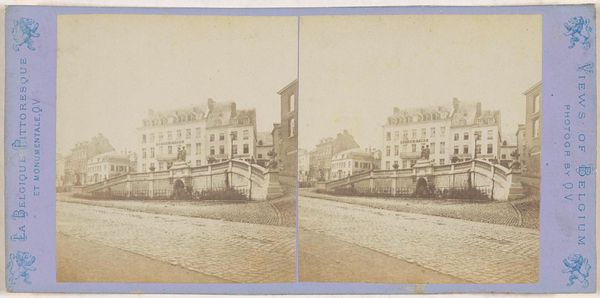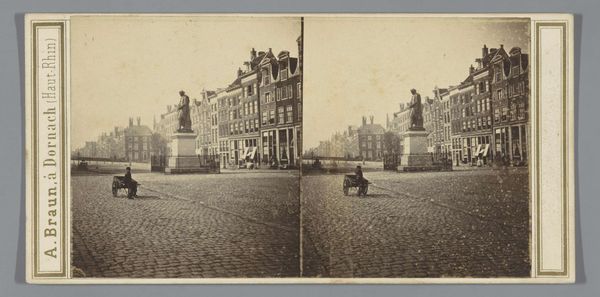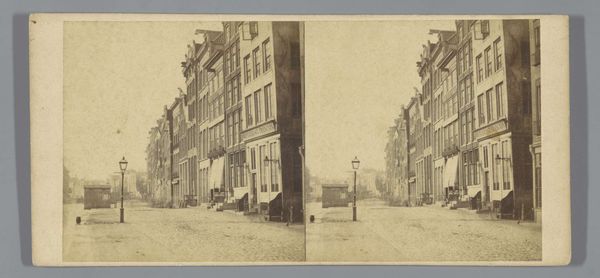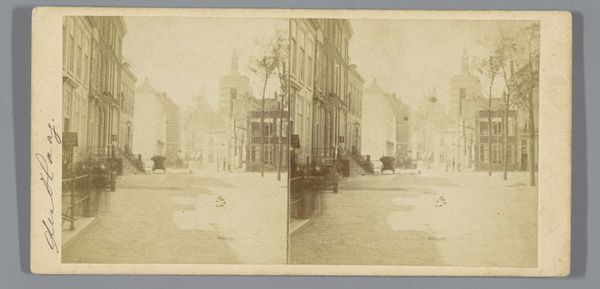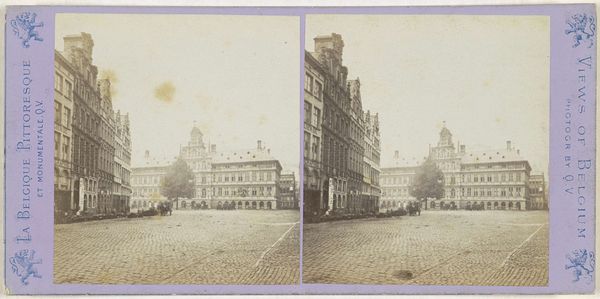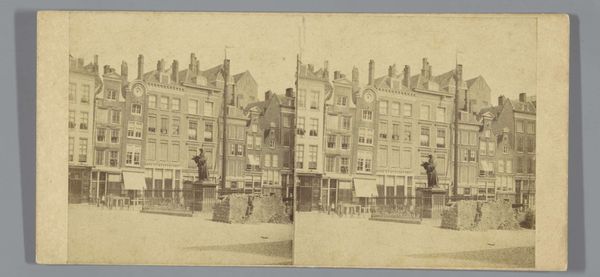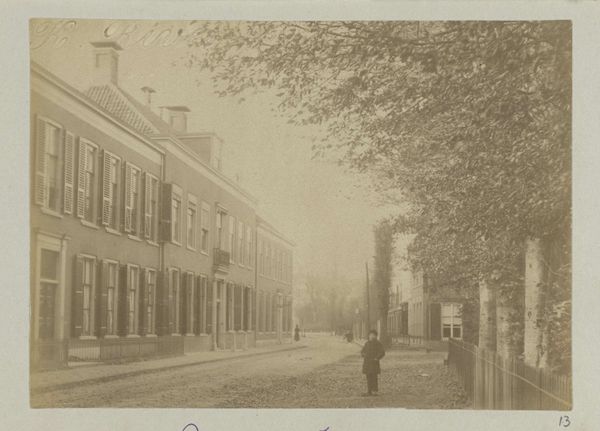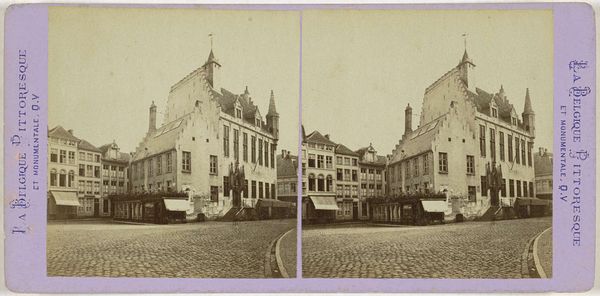
Gezicht op de achterkant van de Peter-de-Grotebron en de Cascade Monumentale in Spa 1866 - 1870
0:00
0:00
juleshippolytequeval
Rijksmuseum
print, photography, site-specific
# print
#
photography
#
site-specific
#
cityscape
#
realism
Dimensions: height 86 mm, width 175 mm
Copyright: Rijks Museum: Open Domain
Curator: This is a fascinating albumen print by Jules Hippolyte Quéval, dating from 1866 to 1870. It's titled "View of the back of the Peter the Great Fountain and the Monumental Cascade in Spa". Editor: My initial response is the feeling of entering a stage. The composition, with the heavy emphasis on linear perspective, creates a dramatic recession into space, almost like a theatrical set. Curator: Exactly. Queval uses this converging perspective quite deliberately. The architecture flanking either side frames the scene, guiding the eye. Note also the contrast between the shadowed colonnade and the sunlit square— a classic formal technique of chiaroscuro. Editor: Those columns. For me they speak of power and permanence, recalling Roman imperial architecture, or perhaps even the grandeur of the Belle Époque. The fountain itself, though partially obscured, serves as a focal point – water as life-giving force, contained and structured by civilization. This is more than just a cityscape. Curator: Indeed. One can analyze the building blocks—lines, forms, tones—but there's also the wider framework: consider, for example, how Quéval has positioned the viewpoint slightly off-center, creating a dynamic tension that elevates this piece beyond a simple topographical record. It transcends straightforward representation. Editor: It seems a statement on civilization controlling nature, or, more generously, humans creating harmonious order out of nature’s bounty. The presence of water is subtle, not a wild river but a carefully managed fountain – symbolic of curated and controlled health. Curator: An astute point! One might even read the composition in terms of its surface texture. The roughness of the cobbled square against the smoothness of the neoclassical facade... the contrast engages haptic sensibilities and also offers visual satisfaction. Editor: This image allows us access to not only Spa, but also ideas about civic order and power dynamics that the city represented. Jules Hippolyte Quéval has captured the city not only in its architectural dimension but in its historical symbolic context as well. Curator: Indeed, Quéval, in utilizing albumen prints, captured the moment, yet has solidified into something beyond a representation. It provides viewers with so much more to consider, than solely the eye might be able to tell.
Comments
No comments
Be the first to comment and join the conversation on the ultimate creative platform.
